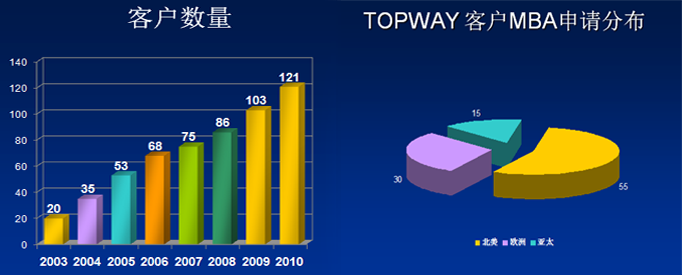我大致翻译了一下,翻译的有点混乱……==|
According to P. F. Drucker, the management philosophy known as Total Quality Management (TQM), which is designed to be adopted consistently throughout an organization and to improve customer service by using sampling theory to reduce the variability of a product's quality, can work successfully in conjunction with two older management systems.As Drucker notes, TQM's scientific approach is consistent with the statistical sampling techniques of the "rationalist" school of scientific management, and the organizational structure associated with TQM is consistent with the social and psychological emphases of the "human relations" school of management.
根据D的说法,TQM(TQM是被设计出来和一个组织和谐搭配、并根据减少产品质量变动性的方式提高对顾客服务的)的基本原理可以和另外两种老的管理体系衔接并成功发挥作用的。TQM的科学管理方法,组织结构与TQM联系的情况是与人际关系管理学中的心理学侧重点一致。
However, TQM cannot simply be grafted onto these systems or onto certain other non-TQM management systems.Although, as Drucker contends, TQM shares with such systems the ultimate objective of increasing profitability, TQM requires fundamentally different strategies.While the other management systems referred to use upper management decision-making and employee specialization to maximize shareholder profits over the short term, TQM envisions the interests of employees, shareholders, and customers as convergent.For example, lower prices not only benefit consumers but also enhance an organization's competitive edge and ensure its continuance, thus benefiting employees and owners.TQM's emphasis on shared interests is reflected in the decentralized decision-making, integrated production activity, and lateral structure of organizations that achieve the benefits of TQM.
然而,TQM不能简单的被嫁接于这些体系或者其他非TQM的体系之上。虽然D强调TQM和这些体系的最终目的是增加利润,但是TQM需要不同的策略。虽然其他的管理系统指出要运用高级管理层的决策和职员的专业化,TQM则把职员的利益、股东和顾客汇聚在一起。比如说:低价不仅对顾客有力,还能加强一个组织竞争的范围并保证它的连续性,因此而使志愿和企业主活力。TQM强调的在利益上的重点体现在下放的决策权上,这整合了生产活动,而横向的组织结构也对TQM有利。
Question #20.196-05
Which of the following best describes the relationship of the second paragraph to the first paragraph?
(A) It presents contrasting explanations for a phenomenon presented in the first paragraph.
(B) It discusses an exception to a general principle outlined in the first paragraph.
(C) It provides information that qualifies a claim presented in the first paragraph.
(D) It presents an example that strengthens a claim presented in the first paragraph.
(E) It presents an alternative approach to solving a problem discussed in the first paragraph.
答案是C,原来选了B,后来看了前人的帖子,理解了前人所说的说没有exception。
但是无法理解C选项呀~
It provides information that qualifies a claim presented in the first paragraph是什么意思呢?
NN们说qualify有限制的意思,在这道题目里也是这个意思。但是我还是不能理解这句话……
谁能帮帮忙解释一下呢?谢谢啦!
Question #20.196-05
Which of the following best describes the relationship of the second paragraph to the first paragraph?
(A) It presents contrasting explanations for a phenomenon presented in the first paragraph.
(B) It discusses an exception to a general principle outlined in the first paragraph.
(C) It provides information that qualifies a claim presented in the first paragraph.
(D) It presents an example that strengthens a claim presented in the first paragraph.
(E) It presents an alternative approach to solving a problem discussed in the first paragraph.
答案是C,原来选了B,后来看了前人的帖子,理解了前人所说的说没有exception。
但是无法理解C选项呀~
It provides information that qualifies a claim presented in the first paragraph是什么意思呢?
NN们说qualify有限制的意思,在这道题目里也是这个意思。但是我还是不能理解这句话……
谁能帮帮忙解释一下呢?谢谢啦!
| 


